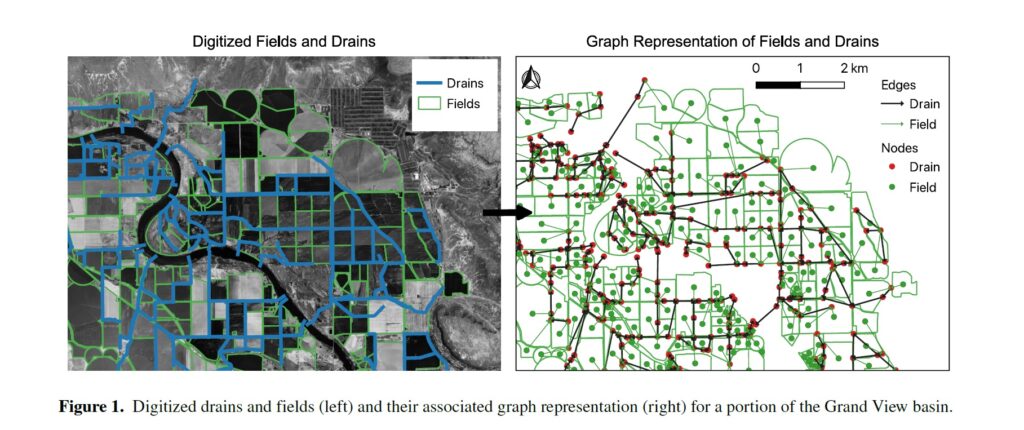Forecasting impact of pressurized irrigation-system upgrades on downstream water bodies
March 10, 2023
The Freshwater Trust published a study in Water Resources Research detailing a graph-theoretic approach for forecasting the impact of pressurized irrigation-system upgrades on downstream water bodies. The approach accounts for attenuation of sediment and nutrient runoff from agricultural fields within complex agricultural drain networks that discharge to rivers and streams.
Using the USDA’s APEX model, TFT first simulated the change in edge-of-field runoff from replacing existing flood irrigation with pressurized irrigation systems on thousands of individual agricultural fields. TFT then quantified the impact of these changes on downstream water bodies by routing and attenuating the edge-of-field pollutant loads through the drain networks to points of discharge.

The video below illustrates the cost optimization described in the study. It shows a series of Pareto-optimal irrigation-upgrade scenarios within a Mid-Snake River agricultural basin in Idaho. Each scenario is a combination of irrigation-upgrade projects that provide an optimal compromise between minimizing total-phosphorus discharge from the drain networks and irrigation-system upgrade implementation cost.
Mid-Snake irrigation-system upgrades: Pareto-optimal
The published study, titled “Prioritizing Irrigation-System Upgrades to Maximize Improvements to Agricultural Drain-Network Water Quality: A Graph-Theoretic Approach,” demonstrates an application of BasinScout, TFT’s data science and analytics system used to catalyze targeted water resource funding and maximize multi-benefit outcomes. TFT has expanded this graph-theoretic approach to optimize siting and scaling of sediment retention basins in drain networks, as well as for modeling irrigation delivery networks for strategic planning of canal piping and on-farm irrigation upgrades.
#BasinScout #irrigation #irrigation systems #Snake River
